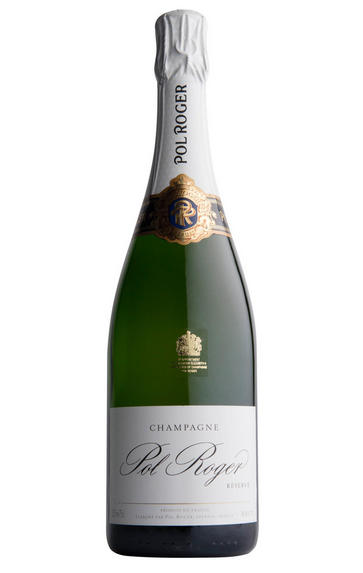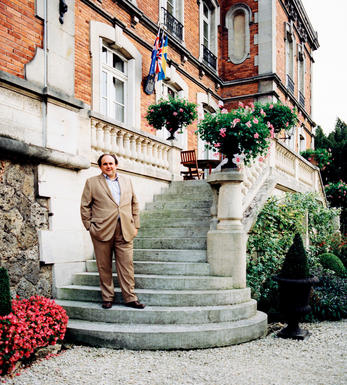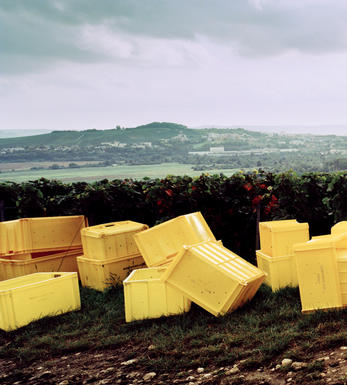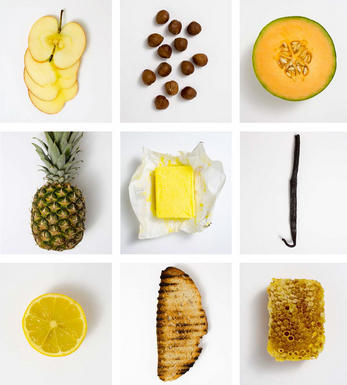
2002 Champagne Pol Roger, Blanc de Blancs, Brut

Critics reviews
Antonio Galloni - eRobertParker.com #203 Nov 2012
About this WINE

Pol Roger
Pol Roger is perhaps best known as Winston Churchill's favourite Champagne. The house remains family-owned and has a reputation for producing champagnes of finesse and elegance which age very well. Pol Roger Brut Rèserve Non-Vintage, made from equal parts of Chardonnay, Pinot Noir and Pinot Meunier, is consistently one of the very best on the market, largely due to the high proportion of aged reserve wines in the blend.
Pol Roger vintage wines, made from at least 60% Pinot Noir and up to 40% Chardonnay, are soft and fruit-driven in youth but, after ten years or so, develop great complexity and finesse. The Cuvée Sir Winston Churchill, launched in 1984 and made from a secret blend, is a Champagne of exquisite finesse and balance and one that rivals the very best of the region.

Brut Champagne
Brut denotes a dry style of Champagne (less than 15 grams per litre). Most Champagne is non-vintage, produced from a blend from different years. The non-vintage blend is always based predominately on wines made from the current harvest, enriched with aged wines (their proportion and age varies by brand) from earlier harvests, which impart an additional level of complexity to the end wine. Champagnes from a single vintage are labelled with the year reference and with the description Millésimé.
Non-vintage Champagnes can improve with short-term ageing (typically two to three years), while vintages can develop over much longer periods (five to 30 years). The most exquisite and often top-priced expression of a house’s style is referred to as Prestige Cuvée. Famous examples include Louis Roederer's Cristal, Moët & Chandon's Dom Pérignon, and Pol Roger's Cuvée Sir Winston Churchill.
Recommended Producers : Krug, Billecart Salmon, Pol Roger, Bollinger, Salon, Gosset, Pierre Péters, Ruinart

Chardonnay
Chardonnay is often seen as the king of white wine grapes and one of the most widely planted in the world It is suited to a wide variety of soils, though it excels in soils with a high limestone content as found in Champagne, Chablis, and the Côte D`Or.
Burgundy is Chardonnay's spiritual home and the best White Burgundies are dry, rich, honeyed wines with marvellous poise, elegance and balance. They are unquestionably the finest dry white wines in the world. Chardonnay plays a crucial role in the Champagne blend, providing structure and finesse, and is the sole grape in Blanc de Blancs.
It is quantitatively important in California and Australia, is widely planted in Chile and South Africa, and is the second most widely planted grape in New Zealand. In warm climates Chardonnay has a tendency to develop very high sugar levels during the final stages of ripening and this can occur at the expense of acidity. Late picking is a common problem and can result in blowsy and flabby wines that lack structure and definition.
Recently in the New World, we have seen a move towards more elegant, better- balanced and less oak-driven Chardonnays, and this is to be welcomed.


Buying options
Add to wishlist
Description
The Pol Roger Chardonnay is a fitting celebration of a great vintage from a superlative House. The high natural sugar levels of this near perfect vintage gave the base wine an average alcohol level of 10.5 degrees, but this was matched by fine natural acidity. Ideal in other words. The resulting Champagne, after a suitable slumber on its yeast, marries the youthful Chardonnay exuberance that one has come to associate with this cuvée with the gravitas of the vintage. Stone fruit notes, allied to brioche, iodine and honey all underwrite latent excellence.
Simon Field MW, BBR Buyer
wine at a glance
Delivery and quality guarantee